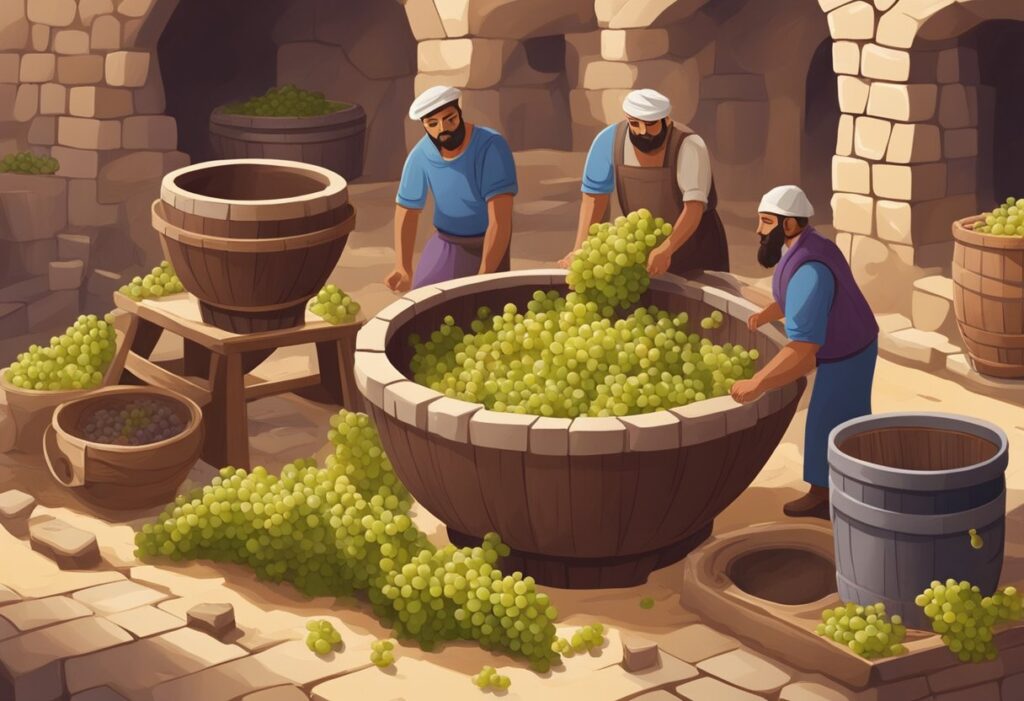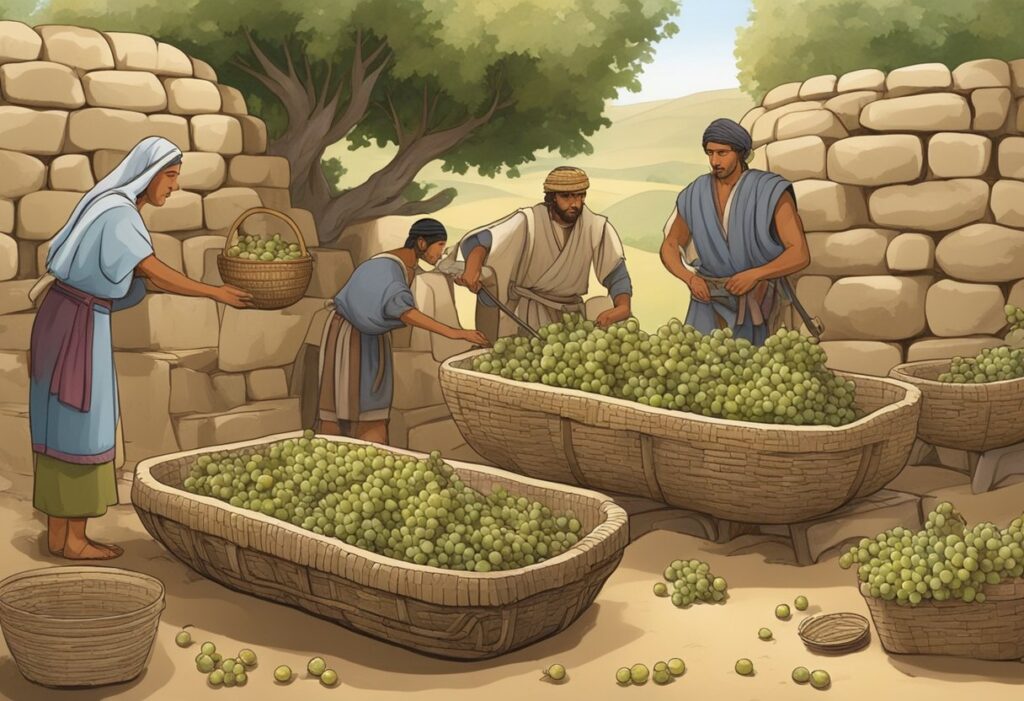Exploring ancient texts and artifacts opens a window to the past, revealing fascinating details about the lives of our ancestors. Among these treasures, references to wine are particularly intriguing. You can discover how wine was not just a beverage but a vital part of ancient culture, mentioned in texts from scrolls to inscribed stones.

Imagine decoding centuries-old manuscripts and finding passages that detail wine production, trade, and its role in religious ceremonies. These ancient references unveil stories about how wine influenced social and daily life. For instance, technology is now decoding burned or broken texts that were once unreadable, bringing lost information back to life.
Artifacts like clay jugs and wine presses also tell their stories. Excavations have uncovered tools and containers that ancient civilizations used for wine, providing physical evidence that complements the written records. Through these discoveries, you gain a richer, more vibrant picture of the past, where wine played a significant role in both mundane and sacred aspects of life. Dive into these intriguing finds to understand better the deep roots of wine in human history.
The Roots of Viniculture in Antiquity
Wine has a deeply rooted history dating back to the Neolithic period. This section explores early evidence of winemaking and the crucial role of the Mediterranean climate in the development of grapevines.
Evidence of Early Winemaking
The earliest known evidence of winemaking dates back to around 6000 BCE. Archaeologists found remnants of ancient wine production in what is now Georgia. These discoveries include clay jars with suggestive residue indicating grape fermentation.
Ancient artifacts from places such as Iran and Turkey also point to the significance of wine in early societies. Sites like Hajji Firuz Tepe reveal that early wines likely played a role in religious and communal ceremonies.
Moreover, ancient texts and pottery fragments from Egypt and Mesopotamia highlight the cultural importance of winemaking. They demonstrate that viticulture spread from the Near East to different parts of the ancient world.
Grapevines and the Mediterranean Climate
The Mediterranean region, with its mild winters and hot, dry summers, proved ideal for cultivating grapevines. This climate allowed grapevines to thrive, making viticulture a significant agricultural practice.
In ancient Greece and Rome, the Mediterranean climate facilitated the spread of vineyards. These civilizations not only cultivated but also perfected winemaking. They developed techniques that improved grape cultivation and wine storage, influencing modern practices.
Artifacts like amphorae, used to transport wine, and frescoes depicting vineyards showcase the Mediterranean’s role in viniculture. The geography of the region provided the perfect environment for grape cultivation, enhancing the quality and quantity of production.
These key factors contributed to the deep and storied roots of viniculture, shaping civilizations through the ages.
Unearthing the Past: Tools and Techniques

Understanding how archaeologists uncover and decipher ancient texts offers a fascinating glimpse into history. It involves careful excavation and advanced technology to reveal secrets hidden for centuries.
Archaeological Excavation Methods
Archaeologists use a variety of tools and methods to uncover historical sites. Excavation starts with surveys to locate potential sites. They use tools like shovels, trowels, and brushes to carefully dig. The aim is to unearth artifacts without damaging them.
Stratigraphy is vital. This method involves analyzing layers of soil to date finds accurately. Each layer represents a different time period. Precise documentation is crucial, including taking notes and photographs.
Special equipment like ground-penetrating radar (GPR) and LIDAR helps detect underground structures and artifacts. These non-invasive techniques reduce the risk of damaging hidden items. It allows archaeologists to plan their dig more effectively.
Deciphering Ancient Texts
Deciphering ancient texts requires expertise and advanced technology. Specialists in ancient languages and scripts work on translating these manuscripts. One noteworthy method is using deep neural networks.
These AI-driven tools can fill in missing parts of damaged inscriptions. An AI tool developed by DeepMind can restore ancient Greek texts with 72% accuracy. Imaging technologies like multispectral imaging allow you to see texts hidden under layers of grime or damaged surfaces.
AI also helps in dating these texts accurately. For instance, the use of AI and imaging innovations in decoding ancient scrolls has made it possible to read manuscripts thought lost to time.
By using these techniques, you can better appreciate how much work goes into unlocking the secrets of ancient documents.
Wine in the Fabric of Society
Wine has played a central role in various ancient cultures, influencing ceremonies, trade, and daily consumption.
Wine’s Role in Ancient Ceremonies
In ancient Greek society, wine was a key part of many religious and social ceremonies. It was often used in libations, where the wine was offered to gods. These rituals were important to ensure favor and goodwill. The Greeks also held symposia, gatherings where wine drinking was central. At these events, attendees discussed philosophy, politics, and shared poetry.
Ceramic jugs found in archaeological sites often depict these gatherings. In some cultures, wine was also used in burial rites, poured over graves or consumed during funerals to honor the deceased. In India, references in texts mention grape wine in social and religious contexts during early medieval times.
Trade and Consumption Patterns
Wine was not only significant in ceremonies but also influenced trade and daily consumption. Throughout Europe, wine trade expanded with the Greek and later Roman empires. Extensive trade networks were developed for the transportation of wine across regions.
Ceramic jugs and amphorae were commonly used to store and transport wine. These artifacts found in shipwrecks and ancient markets provide evidence of widespread wine trade. In Roman and pre-Roman Italy, archaeological evidence shows the importance of wine production and consumption. Regions in Italy became renowned for their wine, which was traded across the empire.
Your exploration of ancient wine shows its lasting impact on society, from rituals to everyday life. The historical significance of wine can be seen through artifacts and documents that trace its journey through time.
Technological Advances in Ancient Winemaking

In ancient times, technological advances in winemaking were vital for improving the quality and production of wine. These innovations included better irrigation systems, as well as new methods for cultivating and harvesting grapes.
The Evolution of Irrigation Systems
Ancient winemakers discovered that effective irrigation was key to growing high-quality grapes. They developed advanced irrigation techniques to ensure their vineyards received enough water, especially in arid regions. This involved constructing aqueducts and canals to direct water from rivers and lakes to their fields.
The Romans were particularly skilled, using detailed plans to build aqueducts that could transport water over long distances. This allowed them to establish vineyards in regions that would have otherwise been unsuitable for grape cultivation. By improving water distribution, they were able to control the growth of their vines and improve the grape quality.
These techniques not only increased the volume of wine production but also helped to maintain consistency in taste. You can read more about these advancements in a study of Roman pottery.
Cultivation and Harvesting Innovations
In addition to irrigation, ancient winemakers also made significant strides in cultivating and harvesting grapes. They experimented with different grape varieties and planting techniques to determine which combinations produced the best wine. They learned to prune vines and manage their spacing to optimize sunlight exposure and air circulation.
Harvesting was done with great care to ensure that the grapes were picked at their peak. Ancient wine producers such as the Romans introduced new tools and methods to make harvesting more efficient. They used specialized knives and baskets to carefully collect the grapes without damaging them.
Furthermore, the introduction of fermentation processes using wild yeast allowed for better control over the final product’s flavor and alcohol content. These innovations contributed to a more refined and consistent wine, as detailed in the findings of Roman wine production.
These technological advances were crucial for the success and longevity of ancient winemaking practices. Understanding these methods gives you a deeper appreciation for the expertise of early viticulturists.
Scholars and Their Contributions

Key contributors to uncovering the history of wine include dedicated scholars and archaeologists who have painstakingly documented ancient vineyard chronicles. Monasteries also played a crucial role in preserving knowledge about wine-making practices.
Documenting Vineyard Chronicles
Scholars have played a critical role in documenting vineyard chronicles. Through extensive research and fieldwork, they have unearthed ancient texts that reference vineyard management and wine production.
For example, the work of Giulia Rossetto focuses on revealing secrets hidden in ancient manuscripts. These manuscripts often contain valuable information about wine cultivation practices, dating back centuries.
Archaeologists also contribute by finding physical evidence of ancient vineyards. Excavations across continents have uncovered tools and remains that give us insight into early winemaking methods.
By combining these findings, we gain a fuller picture of how wine was produced and its significance in ancient cultures.
Monasteries as Knowledge Preservers
Monasteries have been key in preserving the knowledge of wine production. During medieval times, monastic communities kept detailed records of their agricultural activities, including vineyard management and wine-making processes.
Monks meticulously copied and stored ancient texts that would have otherwise been lost to time. These texts often included recipes, cultivation techniques, and other important information about wine.
The role of monasteries was not just to preserve these texts, but also to refine the practices. Monasteries became hubs of agricultural innovation where monastic scholars could experiment with and improve wine-making techniques.
By understanding the contributions of these scholars and monasteries, we can better appreciate the rich history and cultural importance of wine throughout the ages.

